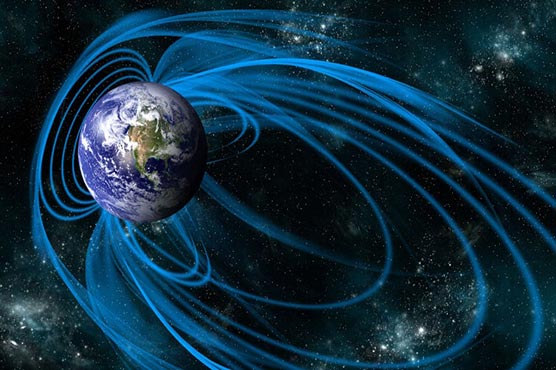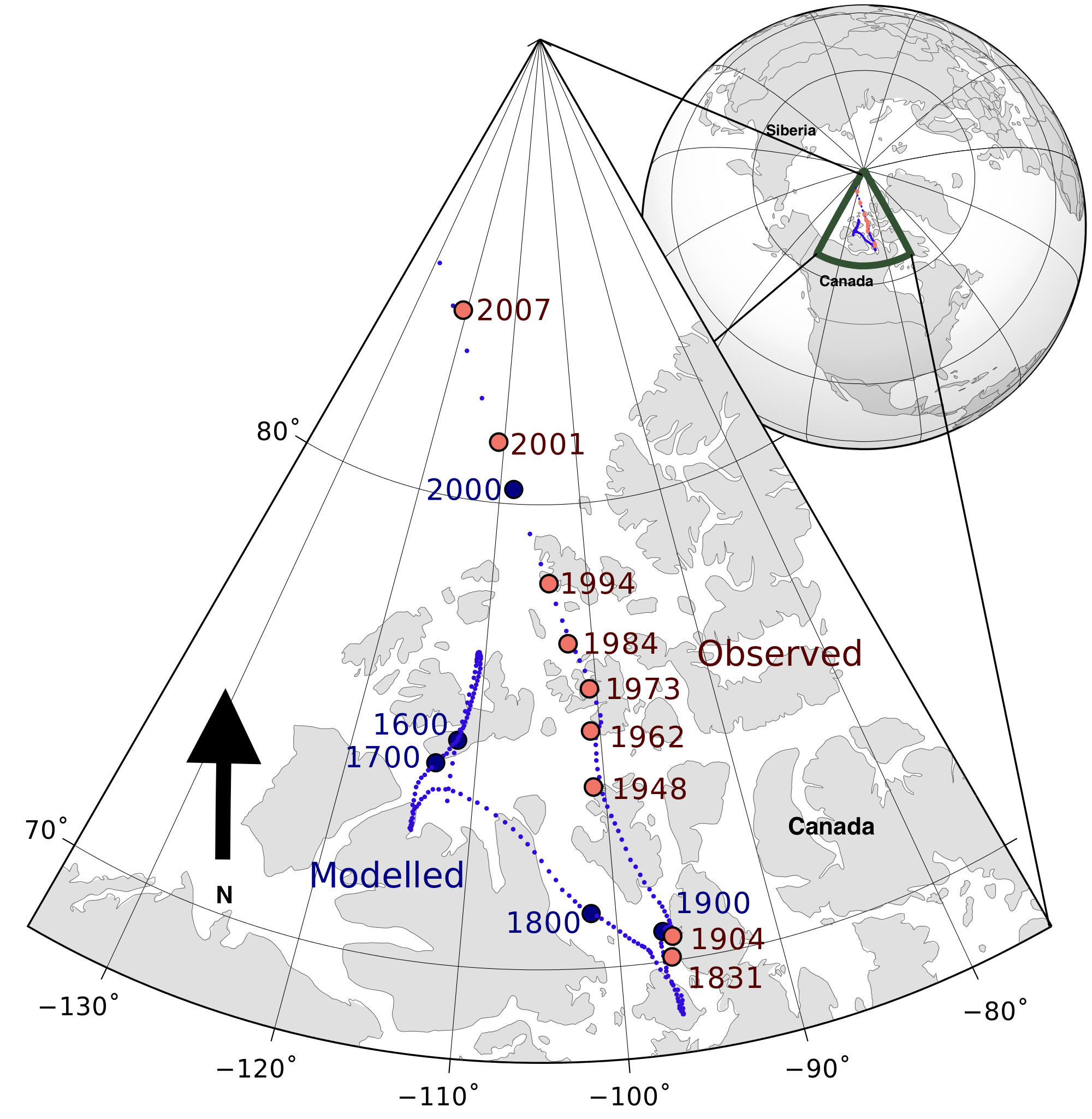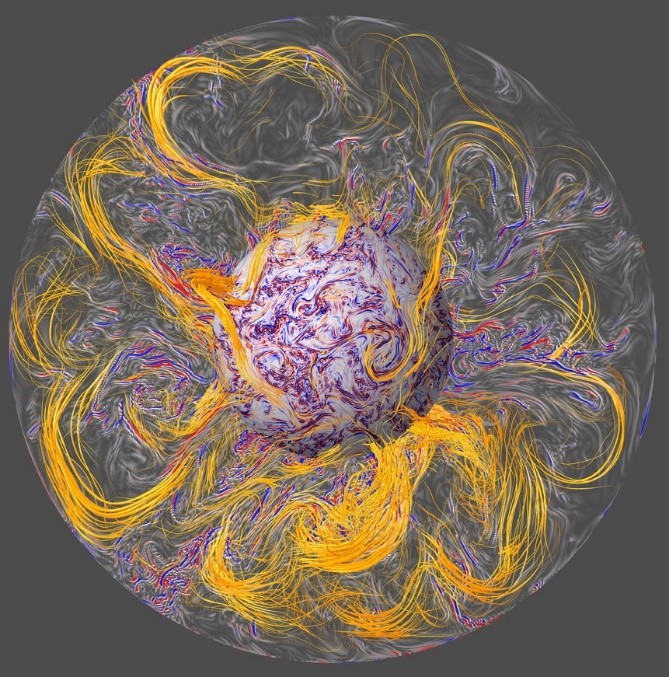Scientists may have determined reason behind shifting of Earth's magnetic north

Earth's magnetic field shields its atmosphere, which keeps out solar radiations.
(Web Desk) – Earth’s magnetic field shields the planet from deadly and destructive solar radiation. Without it, solar winds could strip Earth of its oceans and atmosphere, according to Justin Revenaugh, a seismologist from the University of Minnesota.
However, the planet’s magnetic field isn’t static.
The Earth’s north magnetic pole (which is not the same as geographic north) has led scientists on something of a goose chase over the past century. Each year, it moves north by an average of about 48 kilometres (30 miles).
This movement made the World Magnetic Model – which tracks the field and informs compasses, smartphone GPS, and navigation systems on planes and ships – inaccurate.
Since the next planned update of the WMM wasn’t until 2020, the US military requested an unprecedented early update to account for magnetic north’s accelerated gambol.
Now authors of a new study have gained insight into why magnetic north might be moving – and are learning how to predict these shifts.

Tracking movement in the Earth’s core
Earth’s magnetic field exists thanks to swirling liquid nickel and iron in the planet’s outer core some 2,900 kilometres (1,800 miles) beneath the surface.
Anchored by the north and south magnetic poles (which tend to shift around and even reverse every million years or so), the field waxes and wanes in strength, undulating based on what’s going on in the core.
Periodic and sometimes random changes in the distribution of that turbulent liquid metal can cause idiosyncrasies in the magnetic field. If you imagine the magnetic field as a series of rubber bands that thread through the magnetic poles and the Earth’s core, then changes in the core essentially tug on different rubber bands in various places.
Those geomagnetic tugs influence the north magnetic pole’s migration and can even cause it to veer wildly from its position.
So far, predicting these magnetic-field shifts has been a challenge. But in the new study, the geophysicists Julien Aubert and Christopher Finlay attempted to simulate the physical conditions of Earth’s core by having supercomputers crunch 4 million hours’ worth of calculations.
The researchers knew that the movement of heat from the planet’s interior outward could influence the magnetic field. In general, this happens at about 9 kilometres (6 miles) per year.
But they found that sometimes there are pockets of liquid iron in the core that happen to be much warmer and lighter than the surrounding fluid. If the difference between these hot, less dense bits of fluid and their colder, denser counterparts is great enough, the warm liquid can rise very quickly.
That rapid motion then triggers magnetic waves that careen toward the core’s surface, causing geomagnetic jerks.

Artist depiction of Earth s core
Magnetic north is important for navigational models
Keeping tabs on magnetic north is imperative for European and American militaries because their navigation systems rely on the WMM. So too do commercial airlines and smartphone GPS apps, to help pilots and users pinpoint their locations and navigate accordingly.
That’s why the British Geological Survey and the National Oceanic and Atmospheric Administration update the WMM every five years. The early update requested by the US military was completed February 4.
But even with these periodic updates, geomagnetic jerks make it tough to keep the model accurate, Aubert said.
His group’s new model could address that problem by helping to predict how Earth’s magnetic field might evolve.
"Within the next few years, we envision that it should indeed be possible for our groups … to capture past jerks and predict the future ones with improved accuracy," Aubert said.
Could the magnetic field ever collapse?
Earth’s magnetic field shields its atmosphere, which does "a bulk of the work" of keeping out solar radiation, as Revenaugh put it. If we lost our magnetic field, we’d eventually lose our atmosphere.
But according to Revenaugh, that’s extremely unlikely to happen, since the Earth’s core would never stop rotating.
Even if the field did collapse, the devastating effects depicted in the Hollywood blockbuster The Core – people with pacemakers dropping dead, out-of-control lightning storms, eviscerated national landmarks – wouldn’t follow.
A far more likely scenario, Revenaugh suggested, would involve the magnetic poles reversing as they did 780,000 years ago. When such reversals happen (there have been several in Earth’s history), the magnetic field drops to about 30 percent of its full strength, he said.
Though that’s a far-away scenario, Revenaugh added that it’s still important to improve scientists’ understanding of the magnetic field today.
"The better we can model it, the better we can understand what’s it’s up to," he said.


